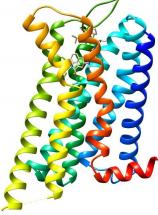NIH-Backed Study Identifies Genetic Markers Underlying SUDs

Addiction Research Articles
Addiction Genetics
Addiction Neuroscience Articles and News
Epigenetics
Neuroscience Articles and News
Overview
Originally Published: 03/24/2023
Post Date: 04/05/2023
Source Publication: Click here
Summary/Abstract
Multivariate genome-wide association meta-analysis of over 1 million subjects identifies loci underlying multiple substance use disorders. The findings show that the combination of genes underlying addiction disorders was associated with the regulation of dopamine signaling. See Attached PDF file below to read the entire study.
genome_wide_association-dopamine_regulation.040523.pdf
Content
In a breakthrough study released by the National Institutes of Health (NIH), researchers at Washington University in St. Louis, Missouri, have identified genes commonly inherited across addiction disorders, potentially paving the way for new treatment targets across multiple substance use disorders, including polysubstance use.
The study was published on Wednesday in the journal Nature Mental Health, included participation from more than 150 co-authors from around the world, and was supported by the National Institute on Drug Abuse (NIDA), the National Institute on Alcohol Abuse and Alcoholism (NIAAA), the National Institute of Mental Health (NIMH), the National Institute of Child Health and Human Development, and the National Institute on Aging.
The findings show that the combination of genes underlying addiction disorders was associated with the regulation of dopamine signaling.
“Genetics play a key role in determining health throughout our lives, but they are not destiny,” NIDA Director Nora Volkow, MD, said in a news release. “Our hope with genomic studies is to further illuminate factors that may protect or predispose a person to substance use disorders—knowledge that can be used to expand preventative services and empower individuals to make informed decisions about drug use.”
Furthermore, Dr Volkow added, having a better understanding of genetics can help facilitate the development of “personalized interventions that are tailored to an individual’s unique biology, environment, and lived experience in order to provide the most benefits.”
Researchers conducting the study used a method known as genome-wide association to pinpoint areas in the genome associated with general addiction risk, as well as specific substance use disorders, in a sample of more than 1 million individuals with genes indicating European ancestry and nearly 100,000 with genes signaling African ancestry. Various molecular patterns underlying addiction were identified.
“The strongest gene signals consistent across the various disorders mapped to areas in the genome known to control regulation of dopamine signaling, suggesting that genetic variation in dopamine signaling regulation, rather than in dopamine signaling itself, is central to addiction risk,” according to the NIH news release.
The genomic pattern identified was found to be more sensitive to having at least 2 co-occurring substance use disorders, and predicted higher risk of co-occurring mental and physical illness.
“Substance use disorders and mental disorders often co-occur, and we know that the most effective treatments help people address both issues at the same time,” NIMH Director Joshua A. Gordon, MD, PhD, said in the release. “The shared genetic mechanisms between substance use and mental disorders revealed in this study underscore the importance of thinking about these disorders in tandem.”
Reference
New NIH study reveals shared genetic markers underlying substance use disorders.





